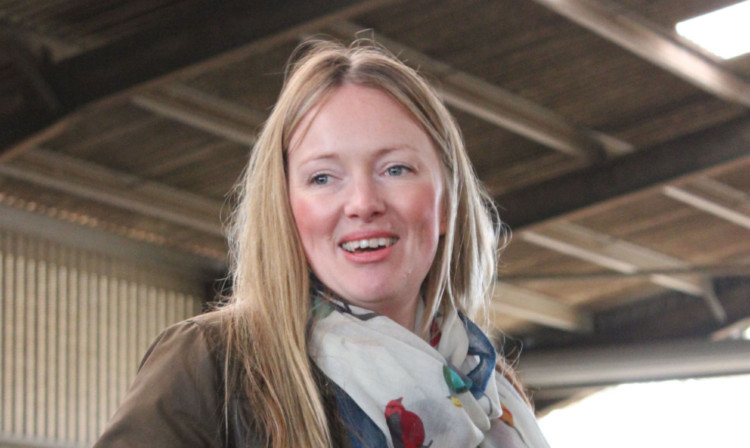Embarking on a “life changing” move, Danny and Alison Milne launched open the doors of Demperston Farm, in Fife, this week as the latest arable unit to join the new HGCA and Potato Council Monitor Farm project.
Danny Milne said the couple were “delighted” to take on a role they hope will benefit the Fife, and wider, farming community by sharing their passion for the future of family farming and providing a forum where local farmers can share their collective knowledge.
The project, run by farmers and for farmers, was instigated and is funded by the HGCA to allow those in agriculture to work together to face industry challenges.
As the fourth generation to spearhead the Milne’s mixed enterprise, the couple farm the 550-acre unit outside Auchtermuchty in partnership with parents Norman and Claire.
The family firm began trading at nearby Dura Mains, Pitscottie, in 1900 a 200-acre unit which the partnership continues to run in tandem with Demperston.
Demperston, bought in 1934, is predominantly a cereal unit.
It is split between spring barley, winter wheat, winter oilseed rape, field beans and winter oats.
These combinable crops are managed in a rotation with temporary grass which also enables the farm to support 70 head of Simmental cross and Limousin cross beef suckler cows, calved in the spring, with stores sold in April; and approximately 50 North County Cheviot ewes, crossed to a Charolais tup for lambs sold as fat stock, coupled to a handful of Mule replacements.
“We are delighted to host Fife’s first arable monitor farm,” said Danny.
“There are so few opportunities for farmers to get together and it was important to us to change that.
“The monitor farm will allow arable farmers in Fife to share ideas on improving farming practices and discuss how best we deal with the challenges and opportunities of the future.”
Introducing the farm at Demperston to more than 60 farmers and attendees, the Milnes provided a view of their land, enterprises, buildings, machinery and livestock, giving an insight into the systems in place.
Danny said six farm cottages are let out in diversification from the farm business, while a small acreage of land is rented out during the autumn to allow for the grazing of sheep.
Until last year some of the land at Demperston was rented out for potatoes to John Weir, of neighbouring Lacesston Farm, Gateside.
However, according to Danny, adverse weather and the resultant impact on ground conditions and soil structure brought an end to that agreement.
John, who grows 150 acres of seed and ware potatoes, joined the monitor farm as a project partner to widen the discussion towards the demand for land to supply the potato-growing industry.
For him, working out how to get the best collaboration between landlord and tenant is one of the reasons he is enthusiastic about the new project.
“The ability to rent land for potatoes is vital in a longer-term rotational context, and many growers locally will have struggled to do so following the recent wet weather,” he said.
“I believe this project will help forge better understanding of what’s needed to make this work for both sides.”
Welcoming the addition of Demperston to the project Gavin Dick, HGCA regional manager for Scotland, said: “Monitor farms have proved very successful because they offer real-time pragmatic decision-making and the chance to examine the impacts of those decisions down the line.”
He said the overall aim of the project is to help farmers to improve their farm’s performance and profitability.
“The monitor farm helps us to share experiences, find out how others have tackled problems, try out new techniques, bring in the best specialists in the industry and do it all on a real farm.
“The emphasis is on practical farming and good business decisions rather than theory.
“Potato production has become highly specialised over the years, but in areas such as Fife it is still an integral part of the rotation on many cereal farms, so their inclusion is a natural evolution of the arable monitor farm programme.”
Claire Hodge, Potato Council technical executive, added: “The monitor farm community groups are a tried and tested way of encouraging arable growers to explore best practice and consider alternative ways forward.
“We hope local potato growers most of whom will also grow cereals will take the opportunity to join in and see the benefits.”
The enterprises on Demperston reflect its topography and soils with higher land, classed 4.1, limited by slope and soil depth over underlying sandstone.
The higher ground is therefore more suited to grazing and includes a significant area of permanent pasture.
Moving down the slope, level to the farm buildings and down towards the A91, the land is in capability class 3.1. The soils are all derived from underlying sandstone.
They vary from silt loams through to sandy loams, with decreasing stone content as the soil depth increases lower down the farm.
These ‘glacial till’ soils are all recorded by the Macaulay Land Use and Research Institute as having a weak structure, but are classified capable of supporting a wide range of cropping from combinables to vegetables and root crops.
